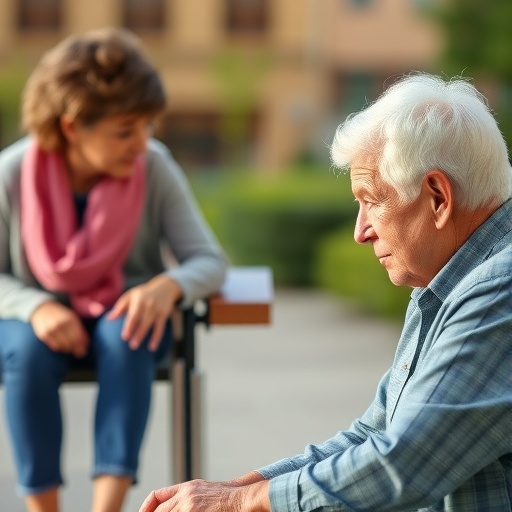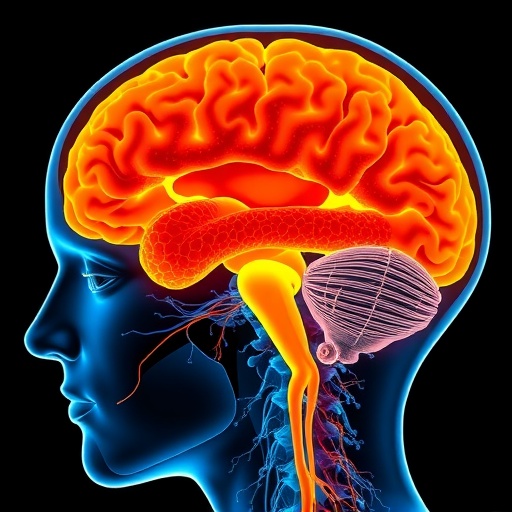The prevalence of falls among older adults is an increasingly alarming issue that is gaining awareness in the field of geriatric medicine. As populations age, the implications of falls become more significant not only for the individuals directly affected but also for healthcare systems and societies at large. The sobering reality is that falls are often preventable, yet they remain one of the leading causes of injury among older adults. Recent correspondence related to this issue continues to shed light on the ongoing discussions surrounding falls prevention in community-dwelling older adults.
The letter to the editor in question discusses the pressing need for the implementation of robust falls prevention strategies and guidelines. Highlights from this discourse reveal a collective call for action across Europe, pointing to a unified stance that recognizes the gravity of the situation. The importance of collaborative efforts among healthcare professionals, policymakers, and community organizations cannot be overstated. Strategies for mitigating falls must be comprehensive, evidence-based, and tailored to meet the diverse needs of older adults living independently in their communities.
From a technical standpoint, the response to the letter emphasizes the need for research-backed interventions. This includes multifactorial assessments and customized interventions that may encompass home safety evaluations, exercise programs to enhance strength and balance, medication reviews, and vision assessments. Each of these elements plays a critical role in creating a holistic falls prevention program, significantly reducing the risk that older adults face daily. The collective input from experts strengthens the argument that a singular approach is inadequate; a multifaceted strategy is necessary to address the diverse factors contributing to falls.
Implementing world falls guidelines requires commitment and an understanding of the regional nuances impacting older adults’ living conditions. The letter indicates a potential disconnect between existing guidelines and their translation into practical, day-to-day applications in various European contexts. By fostering communication and sharing best practices across borders, advocates can ensure that activities are not only standardized but effectively localized to address specific community needs.
Moreover, the importance of ongoing training for caregivers and healthcare providers cannot be emphasized enough. Knowledge dissemination regarding falls risks and prevention techniques is critical. Training should focus on recognizing the warning signs of falls and understanding various risk factors pertinent to older adults. Through a well-informed caregiver network, the chances of falls can be drastically diminished, and there can be an enhancement in the overall quality of care provided to older adults.
With technological advancements, various tools and devices can assist in monitoring and enhancing the safety of older adults. Wearable technology, for example, can alert caregivers when a fall is detected, enabling timely intervention. Additionally, smart home devices can contribute to creating safer living environments by detecting hazardous conditions or sending alerts if a potential fall risk is identified. These innovations present an exciting frontier in falls prevention.
Despite the advances in understanding and addressing falls risk, barriers remain. Awareness and education about falls and their prevention can vary significantly among different cultures and communities. The letter highlights these disparities, urging stakeholders to prioritize education about falls prevention and engage older adults in discussions about safety and mobility.
Furthermore, the integration of multidisciplinary approaches encourages the involvement of physical therapists, occupational therapists, and geriatricians, as each discipline possesses unique insights that contribute to a comprehensive falls prevention strategy. By integrating expertise from various fields, teams can create more thorough assessments and interventions tailored to individual needs.
Public health campaigns can play a vital role in elevating awareness and reducing the stigma around falls. Through outreach, community workshops, and resource sharing, older adults can feel empowered to engage in preventative strategies. These campaigns should also aim to shift the narrative surrounding falls from one of fear and defeat to one focusing on empowerment, resilience, and effective prevention measures.
In delivering this message, it is critical that the dialogue does not end with awareness but rather transitions into actionable change. Governments, health organizations, and communities must act decisively to allocate sufficient funds for falls prevention programs, research, and interventions. The call to action is clear—bold steps must be taken to ensure the safety of older adults embarking on their journey toward independence.
The insights provided in the response to the letter to the editor continue to motivate researchers and practitioners to think creatively about how they can contribute to reducing fall risks. The collaboration displayed signifies a shift toward a more united front in tackling this pressing issue. Progress will not be instantaneous, but with sustained efforts, we can ensure that falls prevention becomes an integral part of the public health discourse in Europe.
As the discussions unfold, it becomes evident that the collective work surrounding falls prevention is a crucial stepping stone in enhancing the quality of life for older adults. By pooling resources, expertise, and experiences, the outcomes of these engagements hold the potential to substantially decrease the occurrence of falls, thus reshaping the narrative surrounding aging and mobility in our communities.
In closing, the letter to the editor serves as both a critique and a call to action, reflecting a need for greater urgency and dedication toward implementing effective falls prevention strategies across Europe. It highlights the importance of a collaborative approach to address the complexities of this health issue and illustrates the significant impact that tailored interventions can have on the lives of older adults. The response encourages ongoing dialogue, embracing innovation, and fostering community partnerships aimed at safeguarding the well-being of older adults, ensuring they can enjoy their later years with confidence and security.
Subject of Research: Falls prevention in community-dwelling older adults
Article Title: Response to letter to the editor, regarding “Falls prevention in community-dwelling older adults and implementation of world falls guidelines: a call for action across Europe”
Article References: Seppala, L.J., Ryg, J., Montero-Odasso, M. et al. Response to letter to the editor, regarding “Falls prevention in community-dwelling older adults and implementation of world falls guidelines: a call for action across Europe”.
Eur Geriatr Med (2025). https://doi.org/10.1007/s41999-025-01308-7
Image Credits: AI Generated
DOI: Not provided
Keywords: Falls prevention, older adults, community health, Europe, geriatric medicine, public health, multidisciplinary approach, technology in healthcare.





